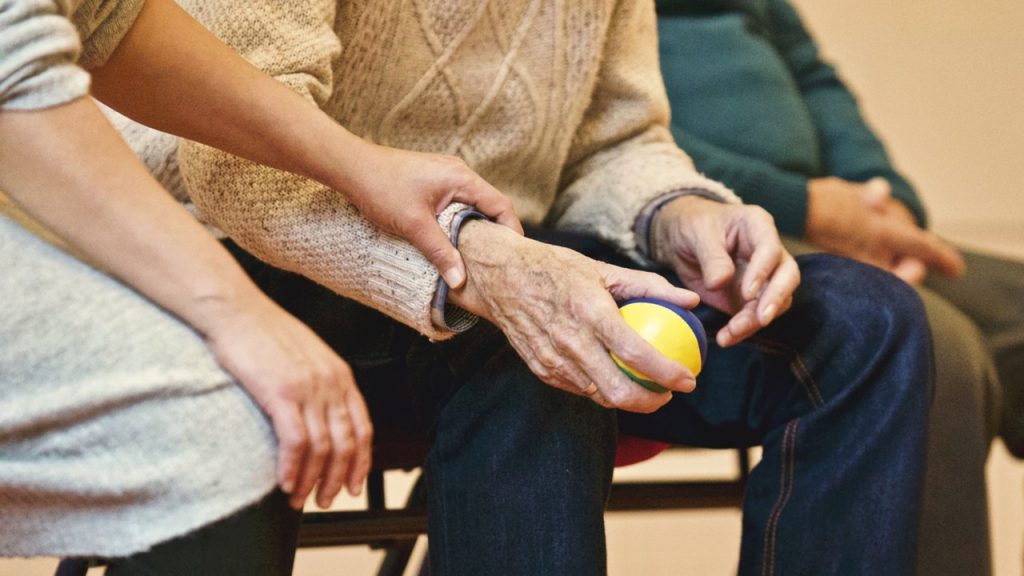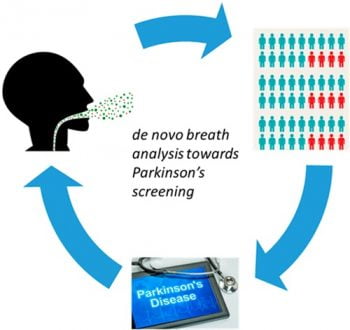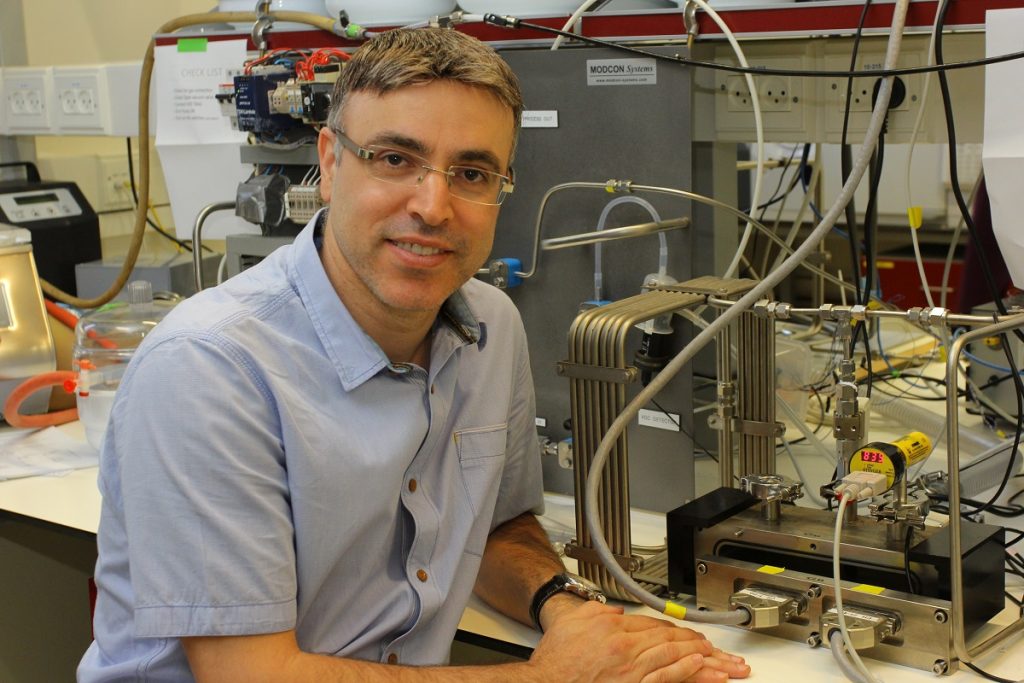A team of scientists at Technion – Israel Institute of Technology has developed a device they say can detect early-stage Parkinson’s disease using a breath test.
In a July study published in the scientific journal ACS Chemical Neuroscience, the scientists detailed their findings following testing of the device on the exhaled breath of 29 Parkinson’s disease patients after initial diagnosis by an experienced neurologist, and 19 control subjects of similar age.
Their results, according to the research, showed accuracy levels of 81 percent.
Parkinson’s disease, a progressive neurodegenerative disorder that affects dopamine-producing neurons in a specific area of the brain called substantia nigra, has four main symptoms and can be difficult to accurately diagnose in its early stages. Symptoms develop gradually and include shaking or tremors, a slowness of movement called bradykinesia, stiffness in the extremities, and postural instability. Diagnoses are often first made by family physicians after which neurologists are usually consulted, according to the Parkinson’s Foundation.
There is no cure and treatment involves medication for symptoms – though none that can reverse the effects of the disease – and surgical therapy.
Parkinson’s disease will affect approximately one million people in the United States by 2020, while ten million worldwide are currently living with the disease. Some 60,000 Americans are diagnosed with Parkinson’s disease every year.
Early detection of Parkinson’s can potentially enable the start of neuroprotective therapy sooner, before the extensive loss of dopaminergic neurons of the substantia nigra occurs, the Technion team, led by researcher John Finberg and Professor Hossam Haick, wrote in the study.
“Early diagnosis of Parkinson’s disease (PD) is important because it affects the choice of therapy and is subject to a relatively high degree of error,” the team members explained.
The scientists developed a device with an array of 40 sensors based on gold nanoparticles or single-walled carbon nanotubes. Each sensor had a different chemical attached that could bind certain volatile molecules in the breath, and this binding changed the electrical resistance of the sensor, a Technion statement said.
The device detected differences in the exhaled breath of people already being treated for Parkinson’s disease and healthy controls, but the team wanted to check whether the device could detect differences in the breath of patients with early-stage, not-yet-treated Parkinson’s disease.
The scientists tested the device on the 29 patients, and compared with the control group, they found that the array detected early Parkinson’s disease with 79 percent sensitivity, 84 percent specificity and 81 percent accuracy, which was better than a diagnostic smell test and almost as good as an ultrasound scan of the brain.
Sign up for our free weekly newsletter
Subscribe“Although the device needs to be improved and validated by larger studies, it has potential as a small, portable system to screen at-risk individuals without the need for highly trained specialists,” the researchers said.
Breath tests to detect diseases
Last year, the renown Technion professor Dr. Haick led an international team of 56 researchers in five countries in a large-scale study to detect disease using breath samples.
The study of more than 1,400 patients included 17 different and unrelated diseases: lung cancer, colorectal cancer, head and neck cancer, ovarian cancer, bladder cancer, prostate cancer, kidney cancer, stomach cancer, Crohn’s disease, ulcerative colitis, irritable bowel syndrome, Parkinson’s disease (two types), multiple sclerosis, pulmonary hypertension, preeclampsia and chronic kidney disease. Samples were collected between January 2011 and June 2014 from 14 departments at nine medical centers in five countries: Israel, France, the USA, Latvia and China.
With a new technology called “artificially intelligent nanoarray,” developed by Haick, the researchers were able to perform fast and inexpensive diagnosis and classification of diseases, based on “smelling” the patient’s breath, and using artificial intelligence to analyze the data obtained from the sensors
The scientists confirmed that different diseases are characterized by different “chemical signatures” identifiable in breath, and discovered that all 17 of the diseases contained the same 13 chemical components, albeit in different compositions.
“Our system has detected and classified various diseases with an average accuracy of 86 percent,” Haick and his previous PhD student, Dr. Morad Nakhleh, explained in a statement.
SEE ALSO: Technion Scientist Invents New Wearable Health System For Detecting Disease
They added: “This is a new and promising direction for diagnosis and classification of diseases, which is characterized not only by considerable accuracy but also by low cost, low electricity consumption, miniaturization, comfort and the possibility of repeating the test easily.”
“Breath is an excellent raw material for diagnosis,” Haick has said. “It is available without the need for invasive and unpleasant procedures, it’s not dangerous, and you can sample it again and again if necessary.”
Related posts

Editors’ & Readers’ Choice: 10 Favorite NoCamels Articles

Forward Facing: What Does The Future Hold For Israeli High-Tech?

Impact Innovation: Israeli Startups That Could Shape Our Future






Facebook comments